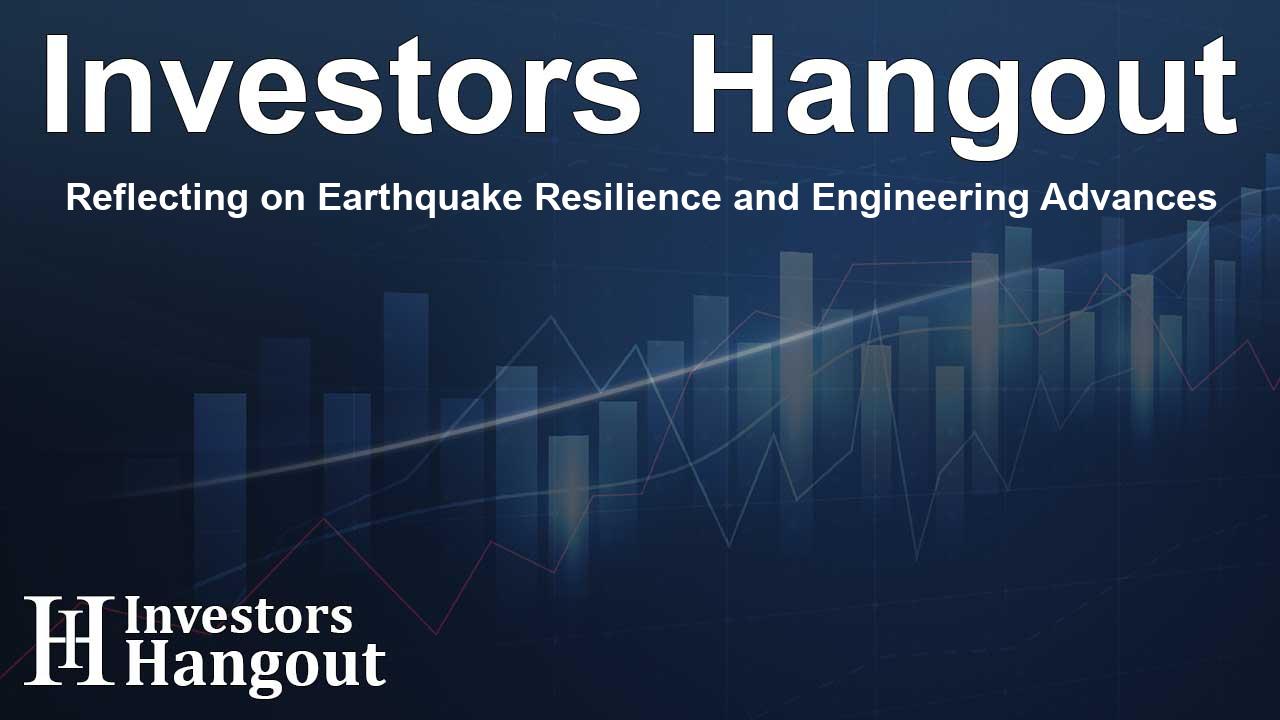Reflecting on Earthquake Resilience and Engineering Advances

The Impact of Historic Earthquakes on Engineering and Resilience
Throughout history, certain seismic events have profoundly affected not only the communities they struck but also the fields of engineering and disaster preparedness. Two of the ten most damaging earthquakes in recorded history occurred on January 17, leading to a deeper understanding of how to build resilient structures.
Lessons from Notable Earthquakes
This article looks back at the significant earthquakes like the Great Hanshin-Awaji Earthquake, an event that marked its thirtieth year of remembrance, and the Northridge Earthquake that took place just a year before. Together, these disasters resulted in the tragic loss of 6,400 lives and left many thousands injured, making a deep impact on societal perspectives toward infrastructure and disaster response.
Engineering Shifts Post-Disasters
Experts like Paolo Bocchini, Director at the Center for Catastrophe Modeling and Resilience at Lehigh University, have emphasized that such seismic events were pivotal in transforming how engineering approaches loss and risk management. These earthquakes became catalysts for promoting performance-based design in construction, shifting the focus to not just surviving disasters but also ensuring that infrastructure remains functional afterwards.
Understanding Modern Resilience
The need for enhanced resilience is becoming a societal expectation. Modern materials and technologies have evolved significantly, and with these advancements, the goals have shifted as well. Bocchini underlines that it is not merely about safety anymore; the expectation now is that buildings and bridges should endure major seismic events and still serve their functions, contributing to rapid recovery post-disaster.
The Economic Impact of Earthquakes
One of the most striking realizations from the Northridge Earthquake was the staggering economic cost of loss of functionality. It is estimated that the recovery efforts after the Northridge quake cost the Los Angeles area economy a staggering $40 billion. This economic breakdown highlighted the urgent need for functional recovery engineering, a discipline that emphasizes preserving the usability of infrastructure after disasters.
Introducing Functional Recovery Engineering
Recognizing the imperative for structures to maintain their usability is a core part of this evolving engineering discipline. Researchers at Lehigh University have developed the "functionality fragility curve," a groundbreaking concept that seeks to enhance structural functionality from a socio-economic viewpoint post-event. This advancement supports engineers and policymakers in aiming for buildings that not only withstand disasters but emerge with minimal operational downtime.
Key Principles of Earthquake Preparedness
While experts like Bocchini recognize that risk can be managed, they understand that certain factors should always be central in earthquake preparedness:
Balance: During an earthquake, structures are primarily subjected to horizontal forces, and if they become unbalanced, the risk of collapse increases. Engineering designs must focus on maintaining equilibrium during seismic events.
Behavior: The damage tolerance of a structure is not only an engineering question but a behavioral one as well. It represents a complex balance where societal expectations and engineering meet the realities of natural forces.
Benefit: Increasingly, infrastructures are being designed with salvaging lives and usability in mind. Engineers strive to create structures that safeguard populations while staying operational after seismic events.
About the Center for Catastrophe Modeling and Resilience
Unveiled recently, Lehigh University’s Center for Catastrophe Modeling and Resilience stands as a testament to the university's commitment to addressing the challenges posed by natural hazards. Having evolved from years of in-depth research focused on catastrophic events, the center aims to offer interdisciplinary resources for scholars and researchers devoted to reducing natural disaster impacts. This dedication to catastrophe modeling and resilience is a crucial strategic priority, further cementing the importance of this work.
Frequently Asked Questions
What was the significance of the Hanshin-Awaji Earthquake?
The Great Hanshin-Awaji Earthquake was pivotal in highlighting the need for improved structural resilience and foundational shifts in engineering practices.
How did the Northridge Earthquake affect the local economy?
The Northridge Earthquake resulted in approximately $40 billion in loss of use during recovery, illustrating the economic toll of rebuilding after major seismic events.
What is functional recovery engineering?
Functional recovery engineering is a discipline that emphasizes preserving the usability of infrastructure and buildings after disasters, ensuring quick recovery.
What are the primary focuses when designing structures for earthquakes?
The primary focuses are balance, behavior, and benefit—ensuring structures remain operational and safe during seismic events.
What ongoing research is being conducted at Lehigh University?
Lehigh University's Center for Catastrophe Modeling and Resilience conducts research on disaster preparedness and resilience, focusing on innovative engineering solutions and catastrophe modeling.
About Investors Hangout
Investors Hangout is a leading online stock forum for financial discussion and learning, offering a wide range of free tools and resources. It draws in traders of all levels, who exchange market knowledge, investigate trading tactics, and keep an eye on industry developments in real time. Featuring financial articles, stock message boards, quotes, charts, company profiles, and live news updates. Through cooperative learning and a wealth of informational resources, it helps users from novices creating their first portfolios to experts honing their techniques. Join Investors Hangout today: https://investorshangout.com/
Disclaimer: The content of this article is solely for general informational purposes only; it does not represent legal, financial, or investment advice. Investors Hangout does not offer financial advice; the author is not a licensed financial advisor. Consult a qualified advisor before making any financial or investment decisions based on this article. The author's interpretation of publicly available data shapes the opinions presented here; as a result, they should not be taken as advice to purchase, sell, or hold any securities mentioned or any other investments. The author does not guarantee the accuracy, completeness, or timeliness of any material, providing it "as is." Information and market conditions may change; past performance is not indicative of future outcomes. If any of the material offered here is inaccurate, please contact us for corrections.